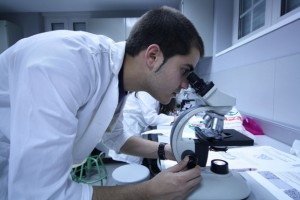Playlist
Show Playlist
Hide Playlist
Summary Sn1 and Sn2 Reactions – Haloalkanes
-
Slides 04 Chemistry Advanced Le Gresley.pdf
-
Download Lecture Overview
00:01 DMSO and dimethylformamide. So, let’s have a look at these parameters and how they influence what is the most likely mechanism? What are the steric chemical implications of these reactions? The parameter of the haloalkane is in order of reactivity in SN2 - primary, secondary, tertiary whereas the reverse is true in the case of SN1. 00:19 In the case of SN2, to facilitate this, a strong nucleophile is highly desirable. However, in the case of SN1, this is largely irrelevant. A good leaving group is something which is better solvated, iodide or bromide is usually a reasonable example, is preferred for the unimolecular nucleophilic substitution reaction. And finally, the solvent. Polar aprotic for SN2 and good ionising and stabilisation of the cation, in the case of SN1. 00:53 Right. Now, that was substitution reactions. And as you can see, there are many different ways that you can carry out substitution with a wide variety of different nucleophiles. 01:03 But, now, what I want to talk about is elimination reactions. These are other competing reactions that can take place in the presence of nucleophiles that behave as bases and can often frustrate somebody when they’re trying to actually carry out a substitution reaction. 01:19 You may recall that we have this general model of a haloalkane which is shown up on the screen right now. And again, instead of looking at nucleophilic substitution in the alpha position, what we’re looking at now is proton or hydrogen abstraction in the beta position, okay, which is the carbon along. So, let’s talk a little bit more about that.
About the Lecture
The lecture Summary Sn1 and Sn2 Reactions – Haloalkanes by Adam Le Gresley, PhD is from the course Organic Chemistry.
Included Quiz Questions
Complete the following statement. SN1 reactions are favored by a(an) ...
- ... protic solvent due to its ability to stabilize cation.
- ... aprotic solvent due to its ability to stabilize cation.
- ... aprotic solvent due to a lack of hydrogen bonding.
- ... aprotic solvent due to hydrogen bonding.
- ... protic solvent due to a lack of hydrogen bonding.
Customer reviews
5,0 of 5 stars
| 5 Stars |
|
5 |
| 4 Stars |
|
0 |
| 3 Stars |
|
0 |
| 2 Stars |
|
0 |
| 1 Star |
|
0 |




